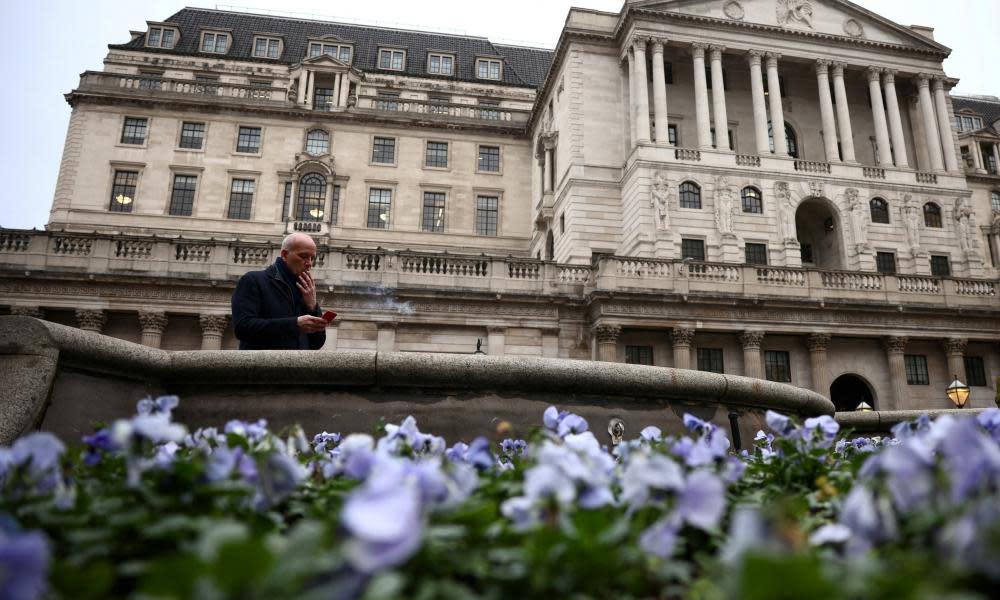Weaker economy, higher inflation: Bank of England’s dilemma

Turn up. Take the temperature of the economy. Raise interest rates. That’s the been the pattern from the responsible technocrats at the Bank of England for more than a year now – and they show no sign of stopping.
Between the depths of the global financial crisis in March 2009 and the start of the Covid-19 pandemic, interest rates were changed only five times, and three of those were in response to unexpected shocks: one after the Brexit vote in 2016, and two at the arrival of the pandemic in 2020. There was one period of more than seven years when interest rates were pegged at 0.5%.
All that has changed in the past year or so, a period in which Threadneedle Street has become hyperactive. The Monetary Policy Committee (MPC) has raised official borrowing costs at each of its last nine meetings, taking interest rates from 0.1% – the lowest since the Bank was founded in 1694 – to 3.5%. A 10th increase is expected at noon on Thursday.
Critics of the Bank say it’s being forced to play catchup after getting inflation forecasts hopelessly wrong. Supporters say this is only true with the benefit of hindsight. What is certain is that Thursday’s decision comes at a time when the Bank is facing an acute policy dilemma.
Related: Bank of England poised to raise interest rates for 10th time in a row
On the one hand, the economy is showing signs of weakening. Higher mortgage costs have taken the heat out of the housing market, with the Nationwide building society reporting a fifth monthly fall in property prices. Business failures are rising as tougher financing conditions wipe out “zombie” companies only viable while rates were at ultra-low levels.
The International Monetary Fund said this week the economy would contract by 0.6% this year and the UK would be the only member of the G7 group of leading industrial nations to go backwards. Faced with this scenario in previous years, the Bank would have been cutting interest rates, not raising them.
Yet, after peaking at a 40-year-high of just over 11%, inflation as measured by the consumer prices index has fallen back only slightly and is still above 10%. The Bank’s legally mandated job is to bring inflation back sustainably to its 2% target and the MPC is concerned that if it allows price pressures to become embedded they will be hard to shift.
The fact that the latest MPC meeting takes place against a backdrop of widespread industrial action, prompted by workers seeking to maintain their living standards in the face of a rising cost of living, will make some members of the committee even more determined to act decisively.
The dilemma facing the MPC is encapsulated by the differing views of what the Bank should do from two of its former members. David Blanchflower said based on the “bleak” growth outlook and falling inflation, he would be voting for a one percentage-point cut in interest rates. “You cut rates in a recession, you don’t raise them to make it worse,” he said.
Andrew Sentance, by contrast, said there was evidence high inflation was increasing wage pressures and he would be voting for a half-point increase to 4%. “You have to create some slack in the labour market. That’s not something you really want to do but the labour market is quite tight and a bit more slack would be helpful in dampening down inflationary pressure.”
The current MPC is no less split. At its last meeting in December, six members voted to raise rates by 0.5 points, two wanted them left unchanged and one voted for a 0.75 point increase.
A similar lack of unanimity is expected on Thursday, with the committee divided between those who think raising rates further risks overkill, and those who think tough action now will avoid the need for even tougher action later.
The interest-rate doves see the risk of an unnecessarily deep recession, while the interest-rate hawks are concerned by core inflation – which excludes energy and food – running at above 6%.
Despite the gloomy forecast from the IMF, the Bank is likely to be less downbeat than it was three months ago, the last time it delivered a health check on the economy. Two things have made the picture slightly brighter: the financial markets have calmed down since the end of Liz Truss’s short-lived premiership; and global energy prices have fallen.
Martin Beck, chief economic adviser to the EY Item Club, said: “The Bank of England’s downbeat prediction in November of a record two-year long recession and a doubling of unemployment illustrates the perils of forecasting when so much depends on volatile factors such as gas prices.
“The significant fall in wholesale gas prices in the last few months means inflation should fall faster and the economy shrinks by less, and for less time, than the Bank of England anticipated three months ago.
“The Bank of England’s growth forecast will also receive a boost from the decline in market interest rate expectations. Three months ago, investors expected Bank rate to peak at around 5.25%. Now, they expect a peak of around 4.25%.”
At a time when other leading central banks are raising rates, anything other than a half-point increase would be a surprise. Assuming that is the case, attention in the markets will turn to whether an 11th and even a 12th successive rate rise is in prospect.
Lord Mervyn King, a former Bank governor, once said that the success of a central bank should be judged by how boring it was. Currently, the Bank of England is anything but.

 Yahoo News
Yahoo News 
